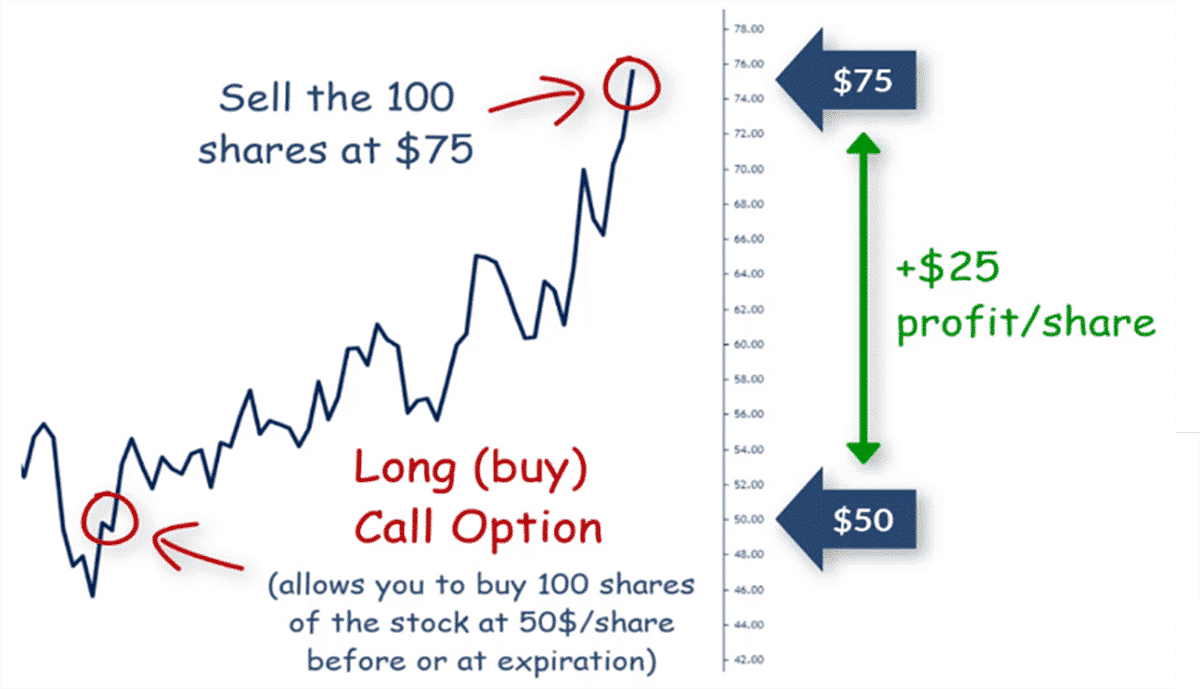Embarking on the Journey of Option Trading
Step into the captivating realm of option trading, where calculated risks can unlock both wealth and knowledge. As I ventured into this financial labyrinth, I discovered the allure and complexities of calls and puts. These power tools empower traders to speculate on market movements and potentially reap substantial rewards. In this comprehensive guide, we’ll delve into the intricacies of calls and puts, their strategic applications, and the insights gained from my trading experiences. Embark with me on this educational journey and unravel the secrets of options trading.

Image: www.stockinvestor.com
Understanding Calls and Puts: The Essence of Options Trading
Calls and puts are contracts that grant the buyer the right, but not the obligation, to buy or sell an underlying asset at a predetermined price within a specified timeframe. Calls convey the right to buy, while puts confer the right to sell. This flexibility allows traders to capitalize on market movements without committing to a purchase or sale outright. Options trading thrives on volatility, where traders can speculate on the potential rise or fall in asset prices. Whether it’s stocks, commodities, or indices, calls and puts enable traders to unlock the profit potential of fluctuating markets.
Decoding the Mechanics of Calls and Puts
When purchasing a call option, the buyer expects the underlying asset’s price to rise. If the prediction holds true, the call option’s value increases, potentially yielding a profit for the buyer. Conversely, put options are purchased when the buyer anticipates a price decline. In this scenario, a falling asset price would enhance the put option’s value, boosting the buyer’s returns. It’s important to note that the buyer has no obligation to exercise the option, but they stand to profit if the market moves in their favor.
Unveiling the Key Components of Options
- Underlying Asset: The asset on which the option contract is based, such as a stock, bond, commodity, or index.
- Strike Price: The price at which the buyer can buy (call) or sell (put) the underlying asset.
- Expiration Date: The date on which the option contract expires and ceases to have value.
- Premium: The price paid to acquire the option contract, representing the potential profit or loss.

Image: 2ndskiesforex.com
Navigating Call and Put Options Strategies: Maximizing Returns
Understanding the mechanics of calls and puts is pivotal, but mastering their strategic applications unlocks true trading potential. Call options grant the buyer the opportunity to acquire an asset at a fixed price, even if the market price surges. Puts, on the other hand, safeguard against potential losses when the market takes a downturn. Each strategy requires a discerning analysis of market trends, risk tolerance, and profit targets.
Expert Tips for Successful Call and Put Option Trading
- Conduct Thorough Research: Before dipping your toes into option trading, arm yourself with comprehensive knowledge of the underlying asset, market dynamics, and trading methodologies.
- Embrace Risk Management: Option trading involves inherent risk. Determine your risk tolerance and trade within your financial means.
- Master Option Pricing Models: Enhance your precision by employing option pricing models like Black-Scholes to gauge the fair market value of options.
- Target Small Wins: Set realistic profit goals and avoid chasing excessive returns. Accumulating smaller gains over time can build a substantial portfolio.
- Stay Updated on Market Trends: Keep a watchful eye on market news, economic indicators, and company financials to make informed trading decisions.
FAQs on Call and Put Options: Addressing Burning Questions
Q: What’s the difference between a call option and a put option?
A: Call options grant the right to buy an asset, while put options grant the right to sell an asset at a specified price on or before the expiration date.
Q: How do I determine the profitability of a call or put option?
A: Profitability depends on the underlying asset’s price movement relative to the strike price and the option’s premium. If the underlying asset moves in the anticipated direction, the option’s value increases, potentially leading to profit.
Q: When is the best time to buy or sell calls and puts?
A: The optimal time to buy or sell depends on market conditions, trading strategies, and risk tolerance. Market volatility, news events, and economic data can influence trade decisions.
Option Trading Calls And Puts
https://youtube.com/watch?v=aFB4wcZVxGU
Conclusion: Embracing the World of Options Trading
The world of calls and puts is a dynamic and rewarding landscape for those who possess knowledge, discipline, and a thirst for success. This comprehensive guide has illuminated the fundamentals, complexities, and strategies of option trading. Armed with this newfound insight, you’re equipped to make informed decisions and navigate the exciting realm of options.
Are you ready to delve deeper into the world of calls and puts? Explore our platform for additional resources, expert insights, and real-time market updates. Together, let’s unlock the full potential of option trading and elevate your financial acumen.






